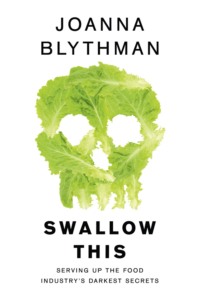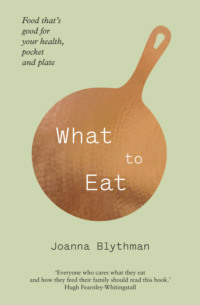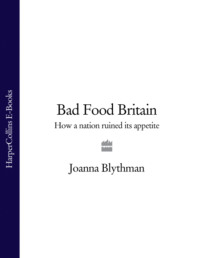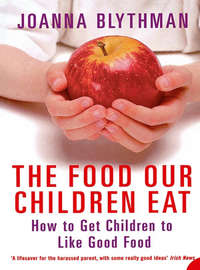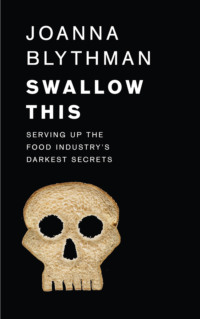
Полная версия
What to Eat: Food that’s good for your health, pocket and plate
Asparagus is one of those vegetables, like corn on the cob, that deteriorates rapidly after cutting. The older asparagus is, the more it dries out and develops a bitter, tinny taste. Wizened, greying lower stalks of asparagus are a dead give-away. Tender fresh asparagus should have tight, firm tips and the stalk, when pressed lightly with your nail, should still feel moist and sappy within. If you put pressure on a spear it should ‘snap’ and look moist inside. It should never be pliable and woody. Fresh-cut British asparagus easily upstages the imported stuff that has come to us over long distances by road and sea or air. This is partly because it is fresher: from a taste point of view, jet-lagged imports from thousands of miles away just can’t compare. But there is also a school of thought that because it grows more slowly in our cooler climate, it develops a fuller flavour.
Things to do with asparagus
• You can’t put a foot wrong if you roast or griddle asparagus – rubbed in olive oil and cooked for just a matter of minutes, until tender – then anoint with good extra virgin olive oil and liberal shavings of Parmesan.
• One of the best and simplest dishes to celebrate asparagus is to dunk the lightly cooked spears into soft-boiled, freshly laid eggs, then dip the eggy spears into breadcrumbs fried in butter.
• If you have been feasting on a glut and have exhausted the familiar treatments, it might be time to go for a more gutsy approach and serve your asparagus with a salsa verde (see Things to do with herbs), punchy with anchovies and mint.
• Use thin sprue asparagus, lightly cooked, in a salad, with crispy lardons of bacon, soft-boiled egg and fried croutons.
• Thick and medium spears, simply steamed, deserve the effort of an hollandaise or beurre blanc sauce.
• A quick, weekday asparagus risotto feels like a weekend treat and is a good way to use cheaper, less regularly shaped spears and stems.
• Delicate pale green asparagus soup, made with stems and topped with a drizzle of cream and a couple of tender tips, is one of the classiest soups. You’ll want to sieve it if your stems are a bit woody.
Is asparagus good for me?
Asparagus is packed with beneficial micronutrients. It is rich in beta-carotene, which is needed for healthy skin and good vision; folate, which protects against birth defects; soluble fibre, which slows down the rate at which sugar is released into the bloodstream; and potassium, which helps moderate blood pressure. It is also one of the best sources of rutin, which, along with vitamin C, helps protect the body from infections. A mild diuretic (it makes you pee), it has been recommended traditionally for ailments associated with sluggish digestion and fluid retention. Don’t be alarmed if your urine has an unusually strong smell after eating asparagus; this is quite normal and harmless. Asparagus contains certain sulphur-based compounds and their breakdown products in digestion are thought to be responsible.
How is asparagus grown?
The plants or ‘crowns’ that produce asparagus spears take about three years to become established and longer still to become fully productive. They do best in a well-drained rich loam – the most prized type of agricultural land. Some growers cover the asparagus mounds with polythene to warm up the soil and encourage the spears to grow earlier. The delicate spears have to be harvested by hand; mechanization is out. White asparagus is particularly time-consuming to harvest because only the very tip of the spear peeps out from the soil, so it takes an experienced eye to spot it.
Although we eat some Spanish asparagus that precedes our native crop by a couple of weeks, most of the out-of-season asparagus we eat in Britain comes from Peru. Peru has cornered the world market for this vegetable because the US decided to subsidize its fledgling asparagus industry in order to encourage alternatives to the cultivation of coca, the raw material for cocaine. So Peru’s asparagus exports have grown rapidly over the past decade, but by several accounts the benefits have not filtered down to the asparagus workers or improved their lives. A number of charities have reported that asparagus workers operate in sub-standard conditions and poverty and that child malnutrition is increasing. In the arid Ica region where Peruvian asparagus production is concentrated, this thirsty export vegetable is also depleting the water resources on which local people depend.
Is asparagus a green choice?
The carbon ‘foodprint’ of air-freighted asparagus is very heavy indeed. It is not necessary to have such foods supplied from abroad and their air- freighting, shipping and trucking, with its energy-intensive, fuel-guzzling cold chain, is undeniably environmentally destructive. Binge on asparagus when the British crop is in season, then forget about it for the rest of the year.
Where and when should I buy asparagus?
Throughout mainland Europe, no vegetable stirs the same excitement as asparagus. Its appearance in mid-April on market stalls and on special restaurant tasting menus heralds the arrival of early summer. In the UK, our asparagus season is short and sweet, six to eight fresh, green, sappy weeks from the third week of April onwards, depending on the weather. Harvested after the ‘hungry gap’ of March and early April when British and Irish vegetable production is at its lowest ebb, asparagus provides a welcome splurge of fleeting, green vegetable after the sturdy roots and brassicas of winter months and before the tender salads of summer. British asparagus has become very sought after in recent years and there is more of it around as growers now increasingly see it as a worthwhile crop to cultivate.
THE MOST EAGERLY AWAITED SPRING FOOD
Before imported foreign spears became a fixture on supermarket shelves, asparagus, which had traditionally been an eagerly awaited spring food, most strongly associated with the Vale of Evesham, but also East Anglia and Cambridgeshire, was regarded as a gourmet food, rubbing shoulders with caviar, truffles and oysters. In 1931 an Asparagus Society was set up at Cambridge University’s Trinity Hall to savour the new season’s crop. The customary start date of the British asparagus season was 1 May.
Until the 1980s, most people’s experience of asparagus – unless they had the good fortune to live in one of our traditional asparagus-growing areas such as the Vale of Evesham – was tinned. Tinned or bottled asparagus is a far cry from fresh, but it is one of the more successful tinned vegetables. Then imported asparagus spears began to appear in swanky, fine-dining establishments. In recent years, however, asparagus has become a fixture in our restaurants, shops and supermarkets. No longer a precious, seasonal crop, a steady flow of air-freighted imported spears has made asparagus available all year round. Is this progress? Most definitely not. Familiarity breeds contempt. It’s hard to get worked up about the 365-day supply of jaded, imported asparagus, but the arrival of our fantastic native crop never fails to thrill.
Will asparagus break the bank?
You always pay quite a lot for good asparagus. Weight for weight, it can cost as much as meat or fish. But the compensation is that even a few spears can elevate a dish based on otherwise unremarkable ingredients and make it seem rather luxurious.
Never waste the bottom part of an asparagus spear. Once peeled, the tender inside can be chopped and added to soups, quiches, pastas and risottos. Thicker, less tender stems are good liquidized in soup along with cheaper green vegetables, such as leeks and peas.
Aubergine
There is something miraculous about the way that raw aubergine can be transformed from a bland, spongy vegetable, with a taste and texture about as interesting as blotting paper, into luscious, yielding flesh, impregnated with sultry flavours. To get the best from this languorous vegetable, observe two principles. First, aubergine eats lots of oil. Yes, it does go against the grain to keep on adding it, but if you are not prepared to give aubergine the oil it needs, then eat something else instead. Or at least don’t stint on the oil but then drain off any surplus after cooking. Second, water — and other liquid ingredients such as tomato pulp and wine — is a potential enemy of aubergine. If you add liquid before the aubergine has absorbed enough oil and softened thoroughly, then the skin will stay squeaky-tight and tough and the skin and flesh will remain firm in the mouth and won’t absorb as well the flavours of other ingredients.
Aubergine has a slightly bitter taste, which is part of its charm. This characteristic is most evident in recipes where you keep the skin on and slightly char it. It is often recommended that you slice or chop aubergine before cooking and leave it sprinkled with salt for half an hour or so to reduce this bitterness. Most of the aubergines we buy are not particularly bitter to start with, so this isn’t really necessary. However, salting does have the advantage of drawing out water from the aubergine, which is helpful because, as a result of the way they are grown, most aubergines we cook with in Britain and Ireland are more watery than those grown outdoors in hot countries. Salting also enhances the flavour (even if you rinse the salt off thoroughly) and firms up the flesh, which means that it absorbs less oil.
The aubergines on sale in Britain and Ireland tend to be much of a muchness. The dark purple, pear-drop-shaped aubergine of uniform size and dimensions rules the roost. Middle Eastern and Asian shops often sell more varied types, with different shapes, sizes and skin tones from white through violet to purple-black. These can have subtly different flavours, being more and less bitter, and a smoother texture when cooked. Whatever sort of aubergine you go for, choose fresh ones. These should look smooth-skinned and firm and feel heavy for their size.
Things to do with aubergine
• Using a ridged, cast-iron grill pan or under a grill, char whole aubergines until the skin is stiff and papery and the interior is completely soft. Skin, then finely chop or liquidize the flesh with light tahini (sesame) paste, garlic and a little olive oil to make a dish in the style of the Lebanese moutabal, or pan-Middle Eastern baba ganoush.
• In Sicilian caponata, aubergines provide an almost meaty bulk in a sour-sweet partnership with celery, tomatoes, capers and vinegar.
• Aubergines love lamb, and flatter it immensely, in a Greek moussaka perhaps, or by adding melting texture that thickens a curry.
• Aubergines hit it off well with Thai flavours, basking happily in a hot, fragrant coconut broth.
• For lighter, more unusual lamb meatballs, use half-and-half cooked, chopped aubergine and meat.
• Tomatoes and garlic are best friends with aubergines. Cook them together in olive oil over a very low heat for hours in a shallow frying pan without a lid until they collapse into a delicious sludge. A stick of cinnamon will nudge the dish in a Middle Eastern direction. Season with salt and pepper and serve warm as a vegetable accompaniment or at room temperature as a starter, with bread or crudités, or sprinkled with parsley and salty white cheese.
Are aubergines good for me?
Even though they don’t have the showy colours that we take as markers flagging up the healthiest vegetables, aubergines have much to commend them. They provide a lot of soluble fibre, which slows down the rate at which sugar is released into the bloodstream, are a good source of B vitamins, which aid brain and nervous system function, and folate, which helps prevent birth defects. Aubergines are particularly rich in useful minerals, especially potassium, manganese, copper and magnesium. Research into the aubergine suggests that it contains very beneficial phytochemicals, such as phenols and terpenes and sterols, which may help protect the body against cancer, microbial infections and viruses, and promote heart health.
How are aubergines grown?
Most of the aubergines we buy are grown either in the UK or Holland in glasshouses in the same way as peppers (see PEPPERs/How are peppers grown?).
Are aubergines a green choice?
Glasshouse production of aubergines raises the same issues as for tomatoes (see TOMATOES/Are tomatoes a green choice?).
Where and when should I buy aubergines?
Standard glasshouse aubergines are available all year round. Most come from Holland, some from Spain, and UK-grown ones are on sale from March until November. For more varied types of aubergine, check out Asian stores and supermarkets and Middle Eastern grocers. Italian food shops sometimes import outdoor-grown aubergines from Italy.
Will aubergines break the bank?
Aubergines aren’t an expensive purchase and can provide cheap bulk in many dishes. Their meaty fleshiness makes them a good, inexpensive vegetarian substitute for meat in lots of recipes. The hidden cost with any aubergine dish is the oil required to cook it.
Aubergines keep well when refrigerated. Older aubergines may begin to sag in their skins and have golden-brown patches that indicate that they are rotting. When you cut into them, their internal pips will look darker and more obvious. If you end up with aubergines like this, there is no need to chuck them out. Just cut off the bad bits and then use as normal.
Broccoli, cabbage, cauliflower and other brassicas
(Brussels sprouts, kale, cavolo nero, bok choy and pak choy, romanesco, kohlrabi, radishes, Chinese leaves, spring greens)
For decades, brassicas were greeted with indifference, or worse, and seen as the least sexy, most unappealing of all our vegetables. Now, in a welcome reversal of status, they have been rediscovered as some of the most chic, interesting and useful vegetables we have to hand. The whiff of overcooked, school dinner cabbage and waterlogged hotel cauliflower no longer hangs over the land. Inspired by foreign cuisines and a new guard of progressive chefs more focused on home-grown vegetables, we have learned new ways with brassicas, be they eaten raw, al dente or cooked to melting softness.
Vegetables in this family don’t show their age as much as lettuce, but with the exception of hard white and red cabbage, which store beautifully, they deteriorate surprisingly quickly, both in appearance and taste. So don’t see brassicas as something to keep in the fridge for future use; eat them as soon as you buy them. UK- or Ireland-grown brassicas will naturally be fresher than the imported (usually Spanish) equivalent.
In cabbage and Brussels sprouts look for good, firm hearts and perky, tight outer leaves. For cauliflower and its pale green relative, romanesco, a compact, hard head is a must. Avoid any that are bendy or yielding. Brassicas such as radishes and kohlrabi should feel hard to the touch. When buying leafy brassicas such as bok or pak choy, or cavolo nero (black cabbage), look for leaves that stand up to attention and are vibrantly green. Don’t buy any that are floppy or dull-looking. You can tell whether purple sprouting broccoli is fresh by testing it with your nail: it should sink into the stalk, which should not be woody or fibrous. You can also use the nail test for the more common chunky, dark green type of broccoli (calabrese). If your nail doesn’t sink in, but the florets are tight and firm, don’t discard it, simply pare off the hard exterior of the stalk with a knife until you come to a softer centre. Cut out the fibrous stalks from kale and use just the frilly green leaves.
When cooking brassicas, timing is critical. Cooking should be either short and sweet, or long and slow, as in cabbage soup, or braised red cabbage. Nothing in between will do. Over-boiled brassicas release sulphurous odours and turn to unappetizing mush. The best way to capture the fresh flavour of brassicas is to use as little water as possible. Either stir-fry, sauté or steam them, or use the half-boil/half-steam ‘conservative’ method. This involves putting the vegetables in a wide, shallow pot with only a little boiling water, so that they are not covered, and then cooking them briefly and furiously with the lid on.
Things to do with brassicas
• Peppery brassicas such as radishes and kohlrabi make excellent salads when shredded, or crudités when cut into batons. Along with hard types of cabbage, commonly eaten raw in coleslaw, they offer that attractive crunch.
• Nutty-tasting brassicas such as cauliflower and romanesco work in raw salads too, as long as they are broken down into tiny florets and generously anointed with a punchy dressing.
• Raw, shredded or torn, tender new inner leaves of cavolo nero and de-ribbed kale add vigour to a green salad.
• Cauliflower is good roasted. Blanch florets in boiling water for two minutes, slice thickly and roast with oil, ground or cracked coriander seed and sea salt.
• Kale and Chinese broccoli (kailan), in common with crisp, juicy pak and bok choy and other Chinese greens, are great steamed for a couple of minutes then finished off with soy sauce and a drop of sesame oil.
• Sauté stems of calabrese broccoli in a mixture of butter and oil, flavoured with chilli flakes and chopped anchovies in a lidded pan until soft, adding the florets two minutes before the end of cooking. You can do the same with purple-sprouting or tenderstem broccoli, but cook both stem and florets simultaneously.
• Cavolo nero lends dark green colour and adds its interesting iron-tinged flavour to hearty winter broths with root vegetables and pulses, such as Scotch broth and white bean soup.
• Thinly sliced Brussels sprouts make a less predictable winter gratin when baked in a white sauce with fried bacon lardons and chunks of blue cheese.
• Sauerkraut (sour, fermented cabbage), bought in a jar, can sharpen and jazz up otherwise plain meals involving cooked ham or sausage, along the lines of the celebrated Alsatian choucroute garni.
Are brassicas good for me?
Brassicas offer a truly impressive package of health benefits. The nutritional profile varies from one to the other. Red cabbage, for instance, has much higher vitamin C levels than white cabbage, but collectively these vegetables share many positive nutritional attributes.
They are loaded with vitamin C, which is protective against many diseases and supports the immune system; vitamin K, which is important for blood clotting and bone health; soluble fibre, which slows down the rate at which sugar is released into the bloodstream; and folate, which helps prevent birth defects. In addition to all this, brassicas contain a collection of useful minerals and phytochemicals, such as sulforaphane and indoles, which are thought to have a strong anti-cancer action, and have an anti-inflammatory effect, which is believed to help reduce the risk of heart disease and stroke.
If you want to lessen your exposure to pesticide residues, choose organic brassicas. If this isn’t an option, discard more of the outer leaves than you usually would as they are more likely to trap residues from spraying.
How are brassicas grown?
Brassicas are grown all over the UK and particularly thrive in coastal areas. Most production is centred on Lincolnshire, Cornwall, Lancashire, Kent and the east of Scotland. The robust, hardy brassicas – cabbage, cauliflower, romanesco, kale, broccoli and Brussels sprouts – are usually grown in open fields, although they can be started off in an open, unheated polytunnel then transplanted for an early crop. More tender, leafy brassicas, such as pak choy, are commonly grown in greenhouses or polytunnels. Some brassica growers specializing in indoor production are now using hydroponic methods, where the vegetables are grown, not in earth, but in a soil substitute and nourished with water and nutrients.
Are brassicas a green choice?
Since brassicas grow well in the UK, there is never any need to eat the imported sort. These come from further afield, using up lots of oil in transport, so they leave a heavier carbon ‘foodprint’ than home-grown. Most imported brassicas come from dryer countries such as Spain where water usage in crop production has put further pressure on already depleted water resources.
Brassicas are very susceptible to insects, pests and diseases, so unless they are organically grown, they are likely to have been given repeated pesticide treatments. These can pollute soil and water and have a negative impact on wildlife. Non-organic British brassica growers are trying to reduce their dependency on pesticides, not least because several products they relied on are being phased out or restricted by the European Union. They are using various techniques to minimize spraying as well as regular crop rotations (not growing the same crop in the same place for too long) to prevent any pest build-up in the soil. That said, many conventional brassica growers still use several controversial pesticides that most consumers would probably prefer were not used to grow their food.
Polytunnel and glasshouse production of brassicas can raise a number of environmental issues too (see TOMATOES/Are tomatoes a green choice?).
Where and when should I buy brassicas?
British-grown brassicas are either in season or available from store as below. If you see these vegetables at other times, they are likely to be either imported or grown in heated glasshouses.
Cabbage: all year
Cauliflower: all year, best in summer
Spring greens: March to June
Brussels sprouts: October to March
Broccoli (calabrese), romanesco: June to October
Purple sprouting broccoli: January to April
Chinese greens: March to December
Kale: September to March
Kohlrabi: July to February
Radishes: March to August
THE SMELL OF SCHOOL DINNERS
Although cabbage and cauliflower have long featured in the British diet, unlike other cultures, we rarely celebrate them. Indeed, many people have an antipathy to them. Koreans go mad for pickled fermented cabbage, kimchee. Eastern and central Europeans celebrate sauerkraut. Say cabbage or cauliflower to British people, and you are more likely to hear remarks about the sulphurous school dinner smell of over-boiled vegetables.
In recent years broccoli, which was rarely eaten in the UK until the 1980s, has become the country’s favourite brassica and a whole range of leafy vegetables once seen as oriental, and only available in Chinese supermarkets, is now being cultivated in the UK. As sales of these newer vegetables have boomed, production of the more traditional cabbages and cauliflower has declined. The area in the UK now planted with these crops has shrunk substantially, partly as a reflection of reduced demand, and also as a consequence of supermarkets paying growers unsustainably low prices for crops, which they then sell with a very healthy profit margin. This is a great pity, because, thoughtfully cooked, these are vegetables any nation should be proud of. Recently both cauliflower and cabbage (the latter often reinvented as ‘seasonal greens’) have earned the patronage of top chefs. Combined with the growing interest in local food, the fortunes of these two familiar vegetables may yet revive.
Will brassicas break the bank?
Since vegetables such as purple sprouting broccoli, spring greens and cavolo nero have become fashionable and calabrese has been hailed as a ‘superfood’, their price in supermarkets has increased noticeably. But in markets, farm shops and independent greengrocers, you can usually buy them for less, with a price tag that more accurately reflects the current wholesale price.
Probably because fewer people can think of something to do with them, radishes, kale and kohlrabi are notably cheap, so they are particularly good buys.
Hard white and red cabbages keep really well in the fridge, so ignore use-by dates that suggest otherwise. Although other brassicas are best eaten nice and fresh, there are ways to rescue those that haven’t yet started to yellow, but are nevertheless past their prime. You can strip off and discard the floppier outer leaves of loose-headed cabbages and sprouts and use just the heart. Few people will notice that cauliflower isn’t as fresh as it might be when it’s cooked in a curry. Cut out any hard ribs and stems on brassicas that are green and leafy, such as spring greens and kale, wilt them in salted, boiling water, then drain them and dress with olive (or nut) oil and lemon juice or a splash of vinegar, in the style of that Greek staple, horta vrasta.




